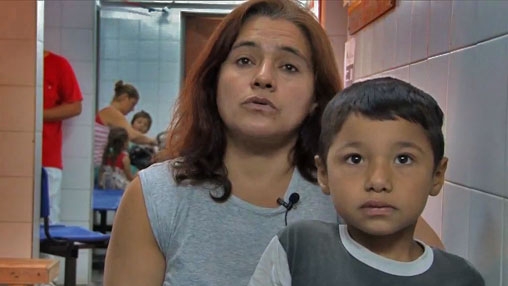What has been achieved in Latin America?
Since 2005, the Maternal and Child Health Insurance Program, Plan Nacer in Argentina has been credited with helping to introduce landmark changes within the Argentinian health system. More than one million previously uninsured pregnant women and children now have basic health insurance and secure access to services, according to the study.
“Plan Nacer in Argentina aims to close the gap [between the insured and uninsured population] and it does it in an innovative and highly effective manner,” explains Andrew Sunil Rajkumar, Senior Economist for Health at the World Bank.
The tax-funded Unified Health System overhauled Brazil’s health system, creating a coordinated national service to which all Brazilians are entitled. Investing heavily in primary care, the Family Health Strategy in particular has been the conduit for important reforms, offering families access to the health system via home visits, health promotion activities and communities
Through its Social Health Insurance program, Chile offers nearly universal health coverage to its 17 million inhabitants. Since 2005, all Chileans have had access to a basic package guaranteeing treatments for up to 80 health problems, setting upper limits to waiting times and out-of-pocket payment for treatments.
In 1991, Colombia established the right to healthcare within its constitution. More than 20 years later, access to health care services in the country have improved considerably thanks to a subsidized national health insurance system. By making the central government responsible for providing healthcare services, the study notes that this subsidized regime has been a “pillar of Colombia’s effort to achieve the right to health care.”
Healthcare improvements in Costa Rica have put the Central American nation firmly within the region’s top performers thanks to its focus on primary healthcare. Today, life expectancy and infant mortality rates are comparable to those of OECD countries in Europe although challenges are now emerging as to the sustainability of universal health coverage in the country.
Access to health care is enshrined within the constitution in Guatemala, however, as the case study notes, this has been challenging to guarantee. Nonetheless, formal agreements established in 1997 with NGOs working in the country now enable Guatemala to provide basic health and nutrition services to 4.3 million people, and serve the needs of 54% of the rural population, focusing particularly on those of women and children.
Once a model for healthcare in the Caribbean, low economic growth means Jamaica now faces the challenge of improving healthcare access within its budgetary constraints. Despite abolishing fees and setting up a national health fund in the past decade, the case study highlights mixed results towards achieving universal health coverage.
Now covering over 50 million people, Mexico’s Popular Health Insurance (PHI) is open to all those without access to social security. A pillar of the country’s 2003 health reforms, the insurance package eliminated user fees and today includes over 200 primary and secondary level treatments.
Over the past two decades, Peru has made a major effort to expand health coverage, however, as the study notes, inequity remains in rural areas and among indigenous populations. Eliminating fees for certain basic healthcare services, the Comprehensive Insurance program is credited with significantly reduce maternal and child mortality in the country
Published alongside examples from Africa, Asia and Eastern Europe, it is hoped that these successes will help spur on other countries currently looking to reform their healthcare systems. The findings will also feature in a new healthcare assessment tool.

